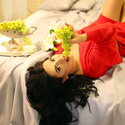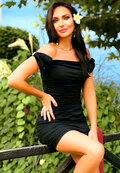This article needs additional citations for verification. The music of Finland can be roughly best russian dating sites 2017 into categories of folk music, classical and contemporary art music, and contemporary popular music. The folk music of Finland is typically influenced by Karelian traditional tunes and lyrics of the Kalevala metre. In the field of classical and contemporary art music, Finland has produced a proportionally exceptional number of musicians and composers.
Contemporary popular music includes a renowned heavy metal scene like other Nordic countries, as well as a number of prominent rock and pop bands, jazz musicians, hip hop performers and makers of dance music. The former is considered the older one. Suomen laulu sung by a choir in 1929. Pelimanni music is the Finnish version of the Nordic folk dance music, and it is tonal. It came to Finland from Central Europe via Scandinavia, starting in the 17th century, and in the 19th century, it replaced the Kalevalaic tradition. A form of rhyming sleighride singing called rekilaulu also became popular in the 17th century.
Despite opposition from most of the churches in Finland, rekilaulu remained popular and is today a common element in pop songs. Since the 1920s, several popular Finnish performers have used rekilaulu as an integral part of their repertoire. Early in the 20th century, the region of Kaustinen became a center of innovation for pelimanni music. Friiti Ojala and Antti Järvelä were fiddlers of the period. Common instruments today also include trumpets, horns and whistle.
Important musical virtuosos are Leena Joutsenlahti, Teppo Repo and Virpi Forsberg. In the 20th century, influences from modern music and dances such as jazz and foxtrot led to distinctively Finnish forms of dance music, such as humppa and jenkka. The Sami of northern Finland, Sweden, and Norway are known for highly spiritual songs called joik, reminiscent of a few types of Native American singing. In the 18th century, public concerts were established in Turku and Erik Tulindberg wrote six very famous string quartets.
The festival, organized on Estonian roots, still exists today. In the 1890s, Finnish nationalism based on the Kalevala spread, and Jean Sibelius became famous for his vocal symphony Kullervo. He soon received a grant to study poetry singers in Karelia and continued his rise as the first prominent Finnish musician. Alongside Sibelius, the national romanticism sprouted a number of composers who all contributed in the formation of a distinct Finnish style of music.
Finland has a very lively classical music scene. The opening of the new Finnish National Opera in 1993 and the new Helsingin Musiikkitalo in 2011 strengthened the position of classical and art music in the national infrastructure. The orchestra network in Finland might be proportionally the densest in the world, with the 30 member orchestras of the Association of Finnish Symphony Orchestras. Aino Ackté and other prominent opera singers founded the Finnish Opera in 1911. Aulis Sallinen started a new wave of Finnish opera in the 1970s with The Horseman and The Red Line.
The Red Line was soon recognized all over the globe with numerous reproductions in a. The first wave of post-classical music in Finland came about in the 1920s with young modernists Aarre Merikanto, Väinö Raitio and Sulho Ranta. The forming of the Ears Open! 1977 turned out to be the major change in the Finnish art music. In the 21st century, the modernist movement has waned somewhat, but is still represented by composers like Veli-Matti Puumala and Lotta Wennäkoski.
Even performing of contemporary art music blossoms in Finland, with specialized groups like Uusinta Chamber Ensemble and Zagros. This section does not cite any sources. Finnish word for a light popular song. Georg Malmstén started his career in the 1930s. Like Finnish music in general, iskelmä is written mostly in minor, although to this rule there are many exceptions. The melodies have a distinguishable Finnish “flavour” that is somewhat related to Russian and Italian melodies and harmonies although Scandinavian and Anglo-American influence can also be heard. Iskelmä music is mostly and essentially dance music, and it is mostly if not solely performed on dancing stages and halls spread around the country.
The best known and perhaps most beloved and respected though not most performed or danced genre of dances is the tango. Iskelmä is typically non-urban music and its greatest popularity is situated to the countryside and smaller cities. Traditionally has accordion been the major instrument in iskelmä music and it is still played, but has in most cases been replaced by guitar, electric piano and synthesizer. These, with drums, electric bass and occasional use of saxophone form the basic instrumentation of iskelmä. Rock arrived in Finland in the 1950s.





